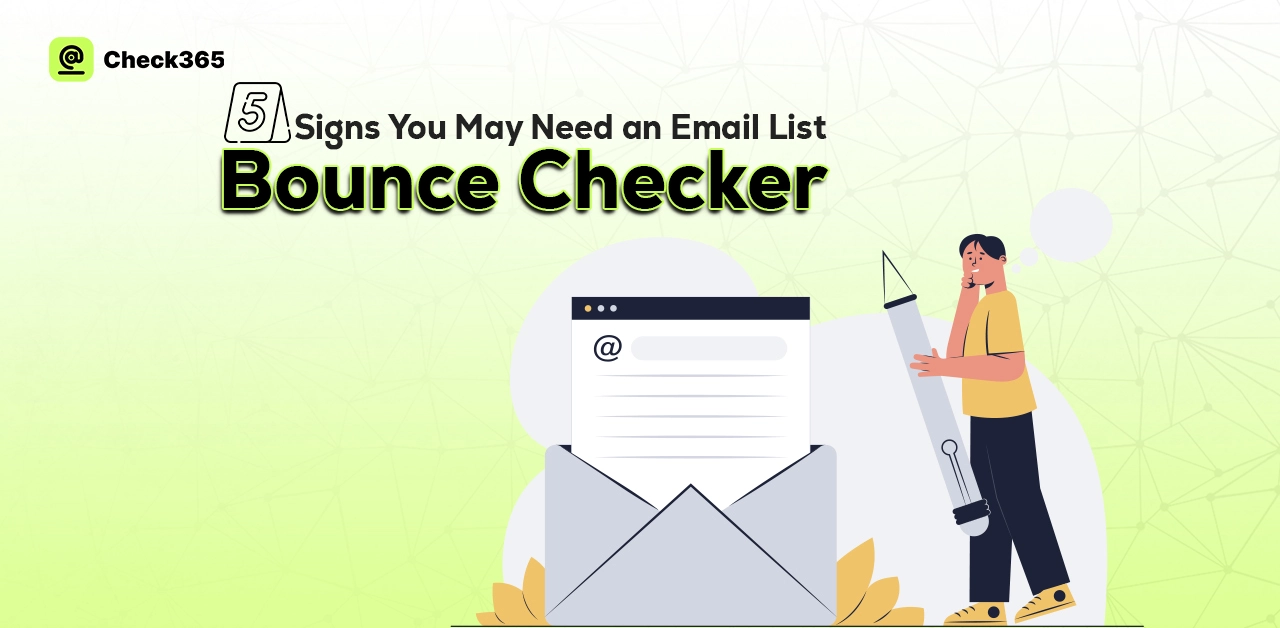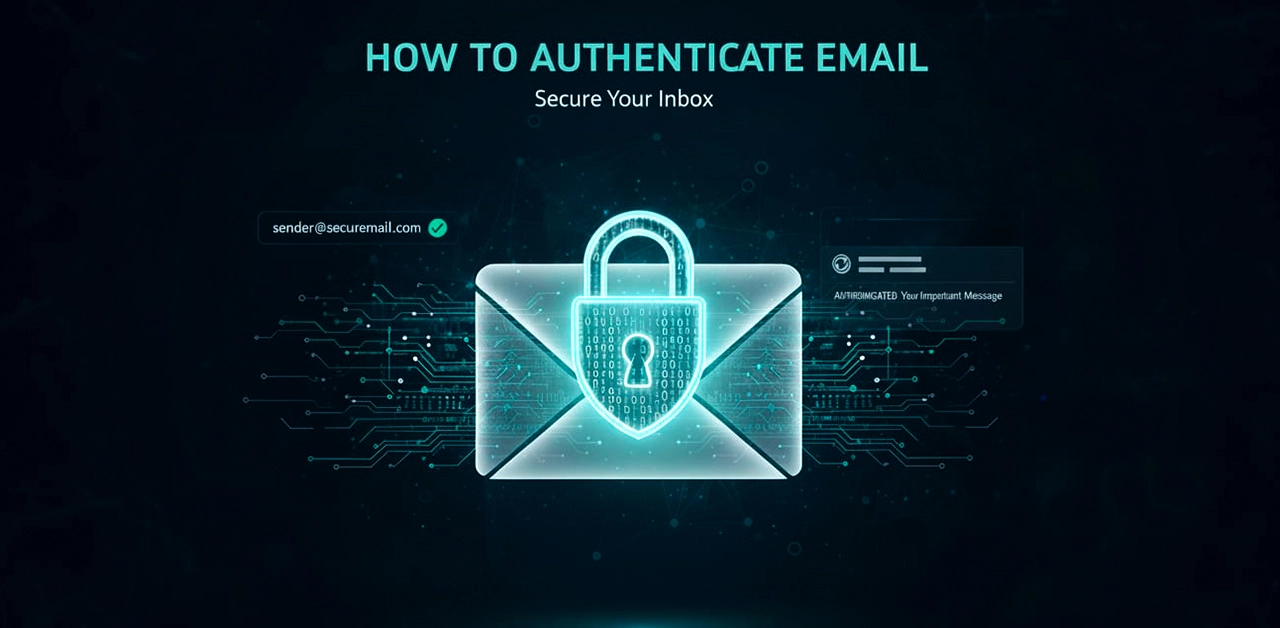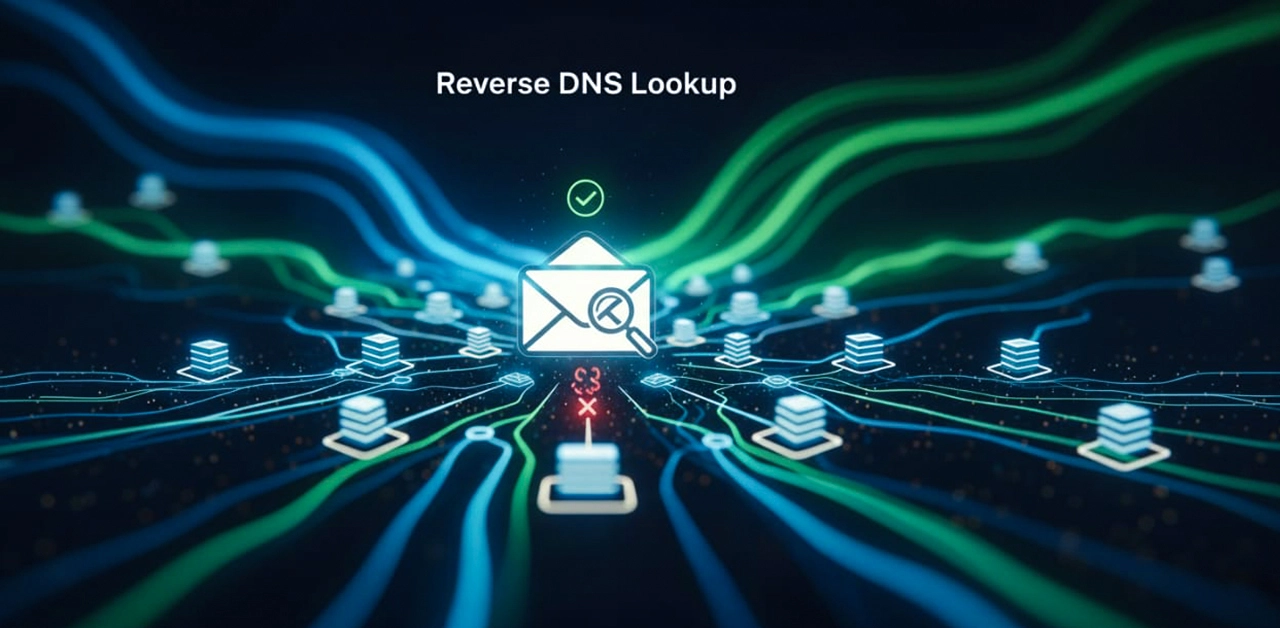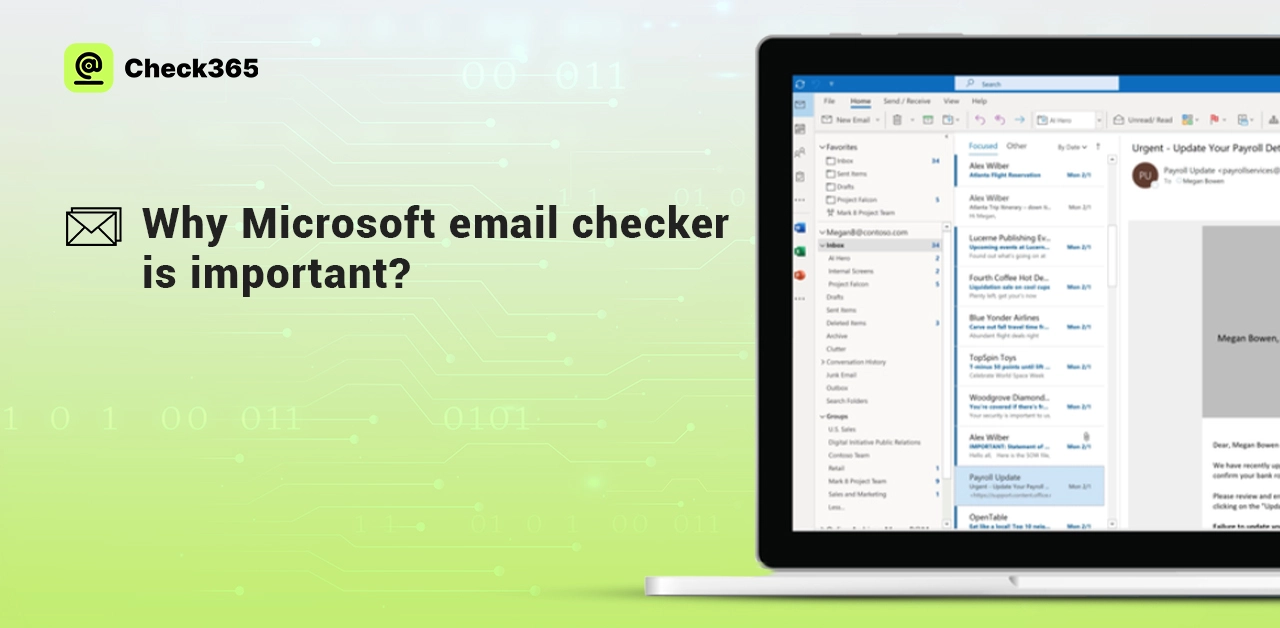Your email list is the most essential part of your marketing, but if it's full of invalid or inactive addresses, it might not help you as much as it should. It's incredible how quickly a list can become useless for many businesses. It gets harder to deliver emails over time as people stop reading them, and the emails start to bounce. When that happens, an email list bounce checker can be a valuable tool. It removes spam addresses, cleans up your list, and keeps your sender reputation safe. In this article, we gave details about 5 Signs You May Need an Email List Bounce Checker, along with reasons why it's important for the success of your email campaigns.
5 Signs You May Need an Email List Bounce Checker
If you want to ensure that your emails reach the right inbox, an email bounce checker is a powerful weapon to help your marketing efforts succeed. Here are the top reasons why you need an email spam checker:
1: High Bounce Rates
You should know something is wrong if a lot of your emails bounce back. When bounce rates are high, a lot of addresses are either not real or can't be reached. Your emails will have a harder time getting through because of this. If you use a bounce checker, you can quickly find and delete bad addresses, which will help your results.
2: Low Open or Click Rates
The fact that not many people open or click on your emails is generally a sign that your list contains fake or dead contacts. Individuals like these don't participate, which makes your effort less successful. You can focus on real, interested users after validating your list.
3: Frequent Spam Complaints
Numerous people marking your emails as spam can hurt your source score. Providers may even block your messages if they get too many spam reports. Bug-fixing tools called bounce checkers eliminate dangerous emails before they cause problems.
4: Emails Going to Junk or Promotions Folder
Fewer people see your emails if they end up in the trash or the promotions folder. List quality problems are often to blame. Using a bounce checker to clean up your list enhances your chances of reaching the main inbox.
5: Using an Old or Purchased Email List
The list you're using may have many fake or out-of-date names if it's old or someone else bought it. It causes more bounces and spam problems. In addition to saving you time and effort, bounce checking helps keep your list up to date.
How to Check Email Bounce Rate?
Simply checking your email return rate can greatly improve the outcomes of your email marketing. Access your email service provider, like Mailchimp, ConvertKit, or Constant Contact, first. On your campaign data page, you can generally find the bounce rate. First, look for two kinds of bounces: hard and soft. Email addresses that don't exist cause hard bounces. Soft bounces generally mean that the server is down or the email is full. To protect your source image, get rid of hard bounces right away. You can find your return rate by dividing the number of emails that didn't go through by the total number of emails that were sent and then multiplying by 100.
As an example, your bounce rate is 2% if you send 1,000 emails and 20 of them don't get delivered. Try not to have more than 2% of people leaving your site right away. Having a higher rate can make it harder for people to obtain your emails. Checking email names before sending is smart because of this. Clearing out your list is easy with tools like Check365.
Simply put, keeping an eye on your bounce rate will help you get more people to your site and improve your results. Be sure to keep your list clean.
How to Stop Spam Email? - Pro Tips
There are a few easy steps you can take to stop spam emails. First, avoid posting your email address on public boards or sites, as scammers often obtain them in this manner. Next, check to see if your spam blocker is working. Email clients like Gmail and Outlook immediately block spam. You can also mark email messages as spam to teach the blocker what not to allow. You can stop getting emails from people you no longer want to hear from. Most of the time, the link to cancel is at the bottom. It's not worth the risk to click on anything in emails that look sketchy or fake. Also, it's best to keep your sign-up and mailing emails separate. This will keep your main email clean and make it easy to handle. Finally, tools like Check365 can help you see where emails are coming from, which will help you avoid spam before it even gets to your inbox.
How Do I Know If My Email List Needs Validation?
You may need to clean up your list if you see a lot of bounces, few opens, or little interaction. Also, it's time to check if it has any old friends or bought emails. If you check your list, you can reach real people instead of fake or dead emails. A clean list makes it easier for your messages to get delivered and protects your positive image as a writer. Also, you can use free email validation tools to check if an email is valid or not.
What Is a Hard Bounce in Email?
Your email could not be delivered, and it never will be if you get a "hard bounce." Usually, this happens when the address is wrong, closed, or doesn't exist at all. This email should be deleted right away. They could hurt your image and future efforts if you keep them.
What Is Soft Bounce Email?
With a soft bounce, things only last for a short time. The server might be down, the email might be full, or your message might be too big. It's possible that these emails will still get through. You should take the address off your list, though, if it keeps going wrong.
Is Email Marketing Still Effective in 2025?
Without a doubt, email marketing is still going strong in 2025. One of the best ways to get in touch with your followers is to tweet. A lot of people still check their email every day, and individual emails get a lot of attention. Automation, segmentation, and AI are some of the tools that have made email marketing more targeted and effective.
Why Does My Email Say Account Error?
When you get an "account error," it generally means that your email settings or login information are wrong. It could be a bad password, a slow internet link, or information about the website that is out of date. For safety reasons, your email service may sometimes block access. Check your settings again, and if necessary, change your password. Also, make sure your device is online. Talk to your email service for help if it still doesn't work.
How Do I Know If My Email List Needs Validation?
You may need to clean up your list if you see a lot of bounces, few opens, or little interaction. Also, it's time to check if it has any old friends or bought emails. If you check your list, you can reach real people instead of fake or dead emails. A clean list makes it easier for your messages to get delivered and protects your positive image as a writer. Also, you can use free email validation tools to check if an email is valid or not.
What Is a Hard Bounce in Email?
Your email could not be delivered, and it never will be if you get a "hard bounce." Usually, this happens when the address is wrong, closed, or doesn't exist at all. This email should be deleted right away. They could hurt your image and future efforts if you keep them.
What Is Soft Bounce Email?
With a soft bounce, things only last for a short time. The server might be down, the email might be full, or your message might be too big. It's possible that these emails will still get through. You should take the address off your list, though, if it keeps going wrong.
Is Email Marketing Still Effective in 2025?
Without a doubt, email marketing is still going strong in 2025. One of the best ways to get in touch with your followers is to tweet. A lot of people still check their email every day, and individual emails get a lot of attention. Automation, segmentation, and AI are some of the tools that have made email marketing more targeted and effective.
Why Does My Email Say Account Error?
When you get an "account error," it generally means that your email settings or login information are wrong. It could be a bad password, a slow internet link, or information about the website that is out of date. For safety reasons, your email service may sometimes block access. Check your settings again, and if necessary, change your password. Also, make sure your device is online. Talk to your email service for help if it still doesn't work.
Final Verdict
A bounce checker must be used regularly to make sure that your email list is still active. Clean up your list if you see a lot of spam complaints, a lot of people who don't engage with your content, or a lot of people who actually do engage with it. Having a healthy list makes it easier to deliver your campaigns and gets better results. You can protect your sender's reputation and save time and money by using a bounce checker.




